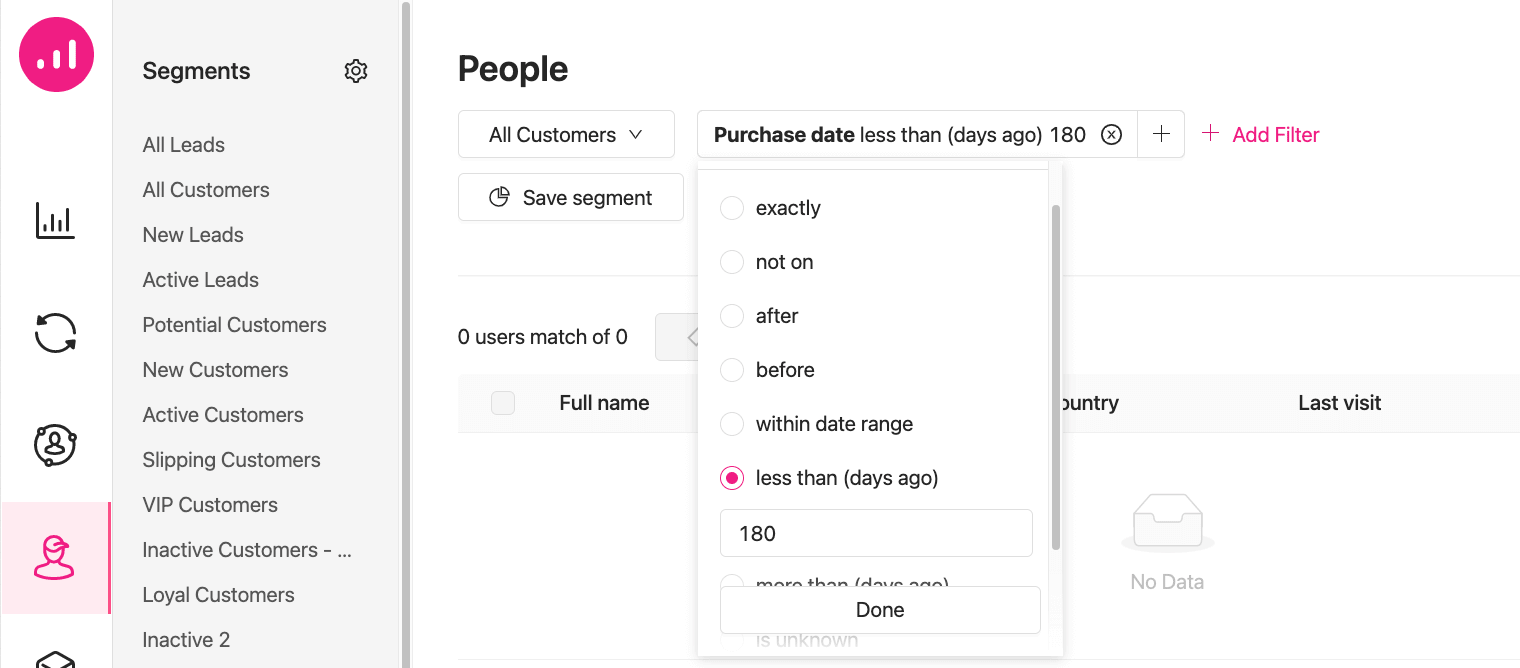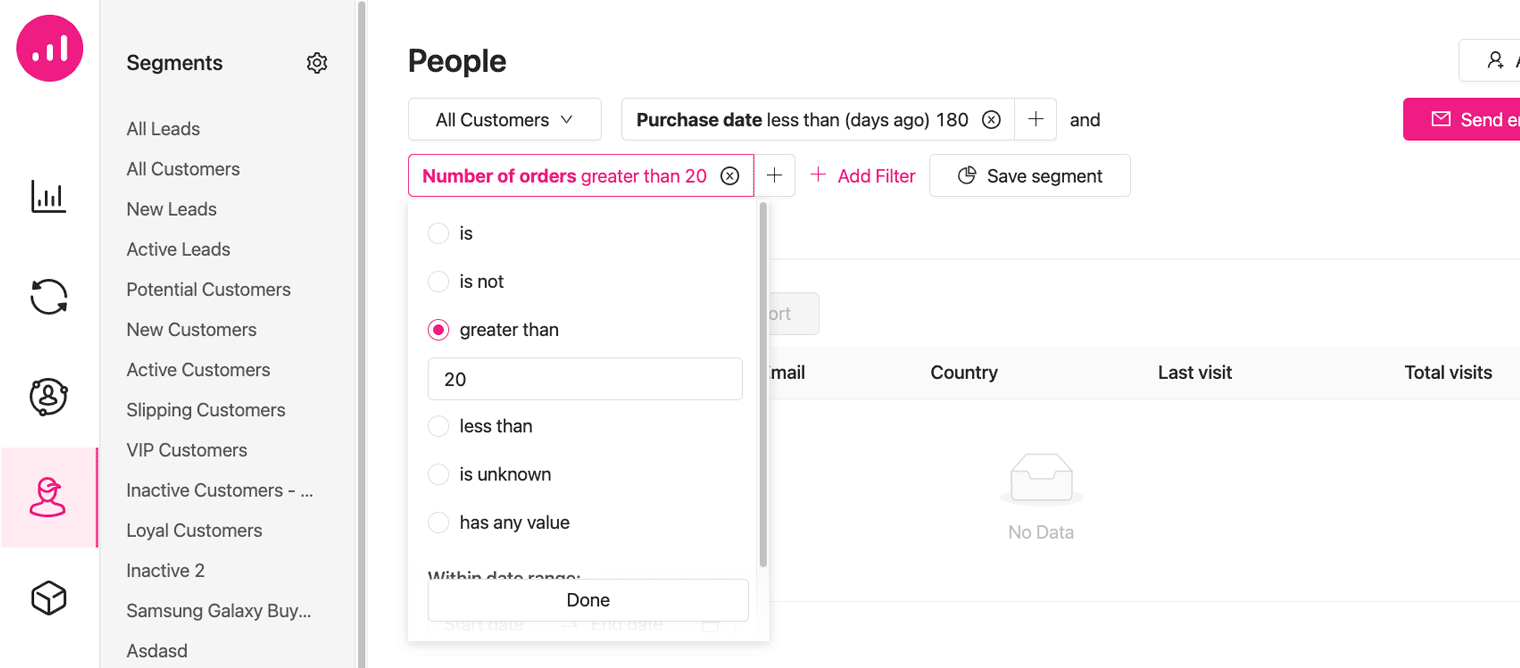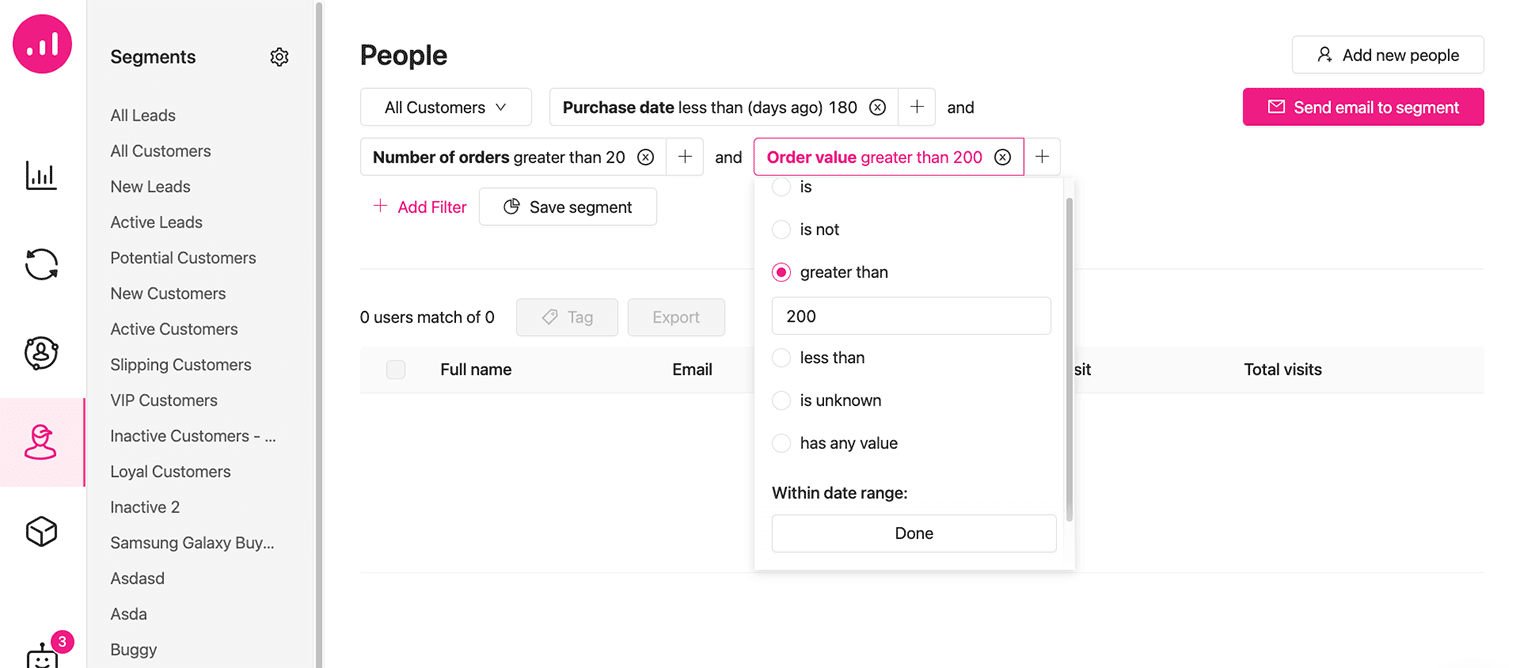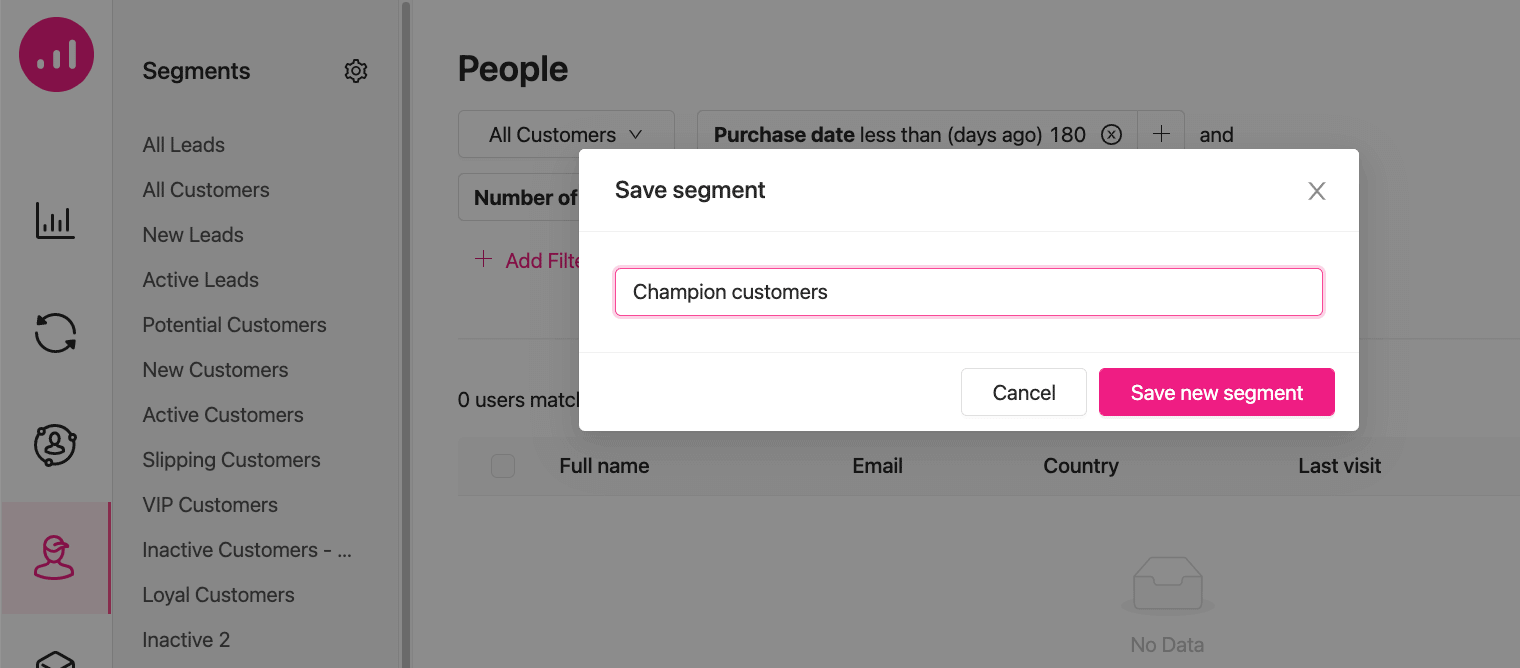
How to use RFM segmentation to drive engagement and loyalty
While traditional marketing segmentation is based on only demographics, modern marketing has something more exciting up its sleeves. It is called RFM segmentation – which is a data-driven approach based on purchase behaviors that generates invaluable customer segmentation.
What is RFM segmentation?
Imagine you are hosting a party and there are some people among the guests who are strangers to the crowd and are too shy to fit in. Of course, you want all your guests to have fun and enjoy the party. That’s why you step in and introduce them to your friends. Engagement is key so that everyone enjoys themselves at the party.
Well, this only works at a party where there is a very limited number of people invited, and you know your guests. But what happens when you want to engage a lapsing customer and keep them buying from your online store? You first need to know your customers, and there could be hundreds or thousands of them. In other words, you don’t really know who is the most and least active. Or who is lapsing and who is thriving.
In fact, you might lose a bunch of customers every single day, because you are consistently too late in figuring out who is disengaged so you try to do something to re-engage them again.
RFM segmentation is a method that can help here. It helps you get to know your customers and group them by their behaviors. Therefore, you have always an updated list of your top customers and those who are about to disengage. This allows you to design laser-targeted marketing campaigns and communicate with your customers knowing their behaviors and status, which will eventually lead to more relevant messages and better outcomes.
Shep Hyken once said, “If your customers are made to feel as if they are outsiders, they will eventually find a competitor who makes them feel better doing business with them.” The data provided by RFM segmentation could pave the way for you to create a smart WooCommerce segments, know your customers, and further build good relationships with them so they never feel abandoned.
How RFM segmentation works
RFM stands for Recency, Frequency, and Monetary value. It’s a data modeling method that analyzes customer value and divides your customers into homogeneous groups based on these key traits. These groups allow marketers to target specific clusters of customers with highly relevant communication, which usually in turn generates much higher rates of response.

Let’s break down each RFM metric:
- Recency: How much time has gone by since a customer engaged in activity or made a transaction with the brand? What is typically meant by activity is a purchase, although this could mean a couple different things such as the last time they visited a site or used a brand’s mobile app. More often than not, the more recently that a customer has engaged with or made a transaction with a brand, the more likely they’ll be receptive and open to communication coming from the brand.
- Frequency: How many times has a customer engaged or made a transaction with a brand during a certain period of time? The more often a customer is active with a brand, the more engaged they are. Therefore, they are more likely to be loyal to that brand than lapsing customers. In this way, we can separately categorize one-time-only customers.
- Monetary: How much money has a customer spent on purchases with a brand during a certain timeframe? Customers who spend more should be given different treatment than customers who spend less. The average purchase amount – which is also a significant factor when segmenting customers – can be calculated by dividing the monetary value by the frequency value.
Why should you care?
RFM segmentation – which is one of the simplest and most effective tools in retail and e-commerce today – can provide essential information about customer behavior. It allows you to quickly sort your customers from best to worst. It can help you segment your customers into meaningful groups. Here are just a few examples:
- All-time high-value customers who score high in all three dimensions. They buy frequently. Their order values are big in comparison to other customers, and they’ve purchased something recently.
- New high-value customers who score high on recency and monetary but low on frequency. They placed some high-value orders recently but how frequently they buy is not determined.
- Lapsing high-value customers who score high on frequency and monetary but low on recency. They once were among the best customers who placed high-value orders frequently, but they have not been around for quite some time now.
- Low-value customers who score low in all three dimensions. These customers placed very few and low-value orders, and they are not around anymore.
Now imagine what you can do with all these customer segments. For example, you can save money by abandoning your low-value customers and focus your resources on higher-value customers to keep them engaged. Essentially, RFM tells you where to focus your attention before it’s too late.
Here are just a few examples of how you can put RFM to work:
- Make your all-time high-value customers feel distinguished by offering incentives, special accesses or unlocking grand badges.
- Encourage your new high-value customers to keep buying with personalized nurturing campaigns.
- Re-engage those who are about to churn by reactivating campaigns.
If you haven’t yet implemented RFM segmentation into your business, now is the time. Let’s see how you can segment your customers using RFM analysis.
How to perform RFM segmentation for your own business
First, you would need a customer segmentation tool that is capable of filtering out customers based on their shopping behavior. Growmatik is a good candidate for this purpose. It’s a free tool capable of advanced customer segmentation. It can also send automated emails to each of these segments.
Recency
First, we need to filter customers based on recency values. To do this, go to the People page and select All Customers on the top. Now add the first filter for Shopping Activity > Purchase date. We are interested to know when the last purchase was made so choose Last time on the top and then select less than x days ago. This will target users with the most recent shopping activity. Respectively, you can use more than x days ago to target churned or about to churn customers.

Frequency
To reveal the frequency of purchases, add the second filter for Shopping Activity > Number of orders. Use greater than x or less than x selectors and enter an amount.

Monetary
The last metric is monetary. We want to select users based on the value of their transactions. From the filters list, choose Shopping Activity > Order value and similarly use greater than x or less than x selectors.

Save RFM segments and use them
Once you are done with filtering customers, it’s time to save it to use for your marketing campaigns. To do this, click the Save segment button and enter a name depending on the type of users you’re targeting, whether it’s top or churned customers.

Now you have a customer segment that is constantly updating based on your customer behavior and you can use this segment as a condition for any personalization or marketing task. You can always send marketing emails to the people inside that segment by simply choosing the segment from the left sidebar and clicking the Send email to segment button on the top.
Similarly, you can create and save multiple segments for top customers, top customers about to churn, churned customers, etc. Just keep in mind that every business has its own definition of “top” or “churned,” and you should pick yours too. For example, one month of customer inactivity for a shop selling groceries is definitely a sign of churn while it is not the case with a shop selling refrigerators.
Wrap up
RFM is one of the most important data-driven customer segmentation methods that help you figure out where you should pay attention and when you do it. It allows you to make tactical decisions to improve user engagement and retention.
In future blog posts, we’ll take a closer look at specific RFM segments and how to create them with Growmatik. Additionally, we’ll discuss what can be done to each of those customer segments to improve overall user engagement.

